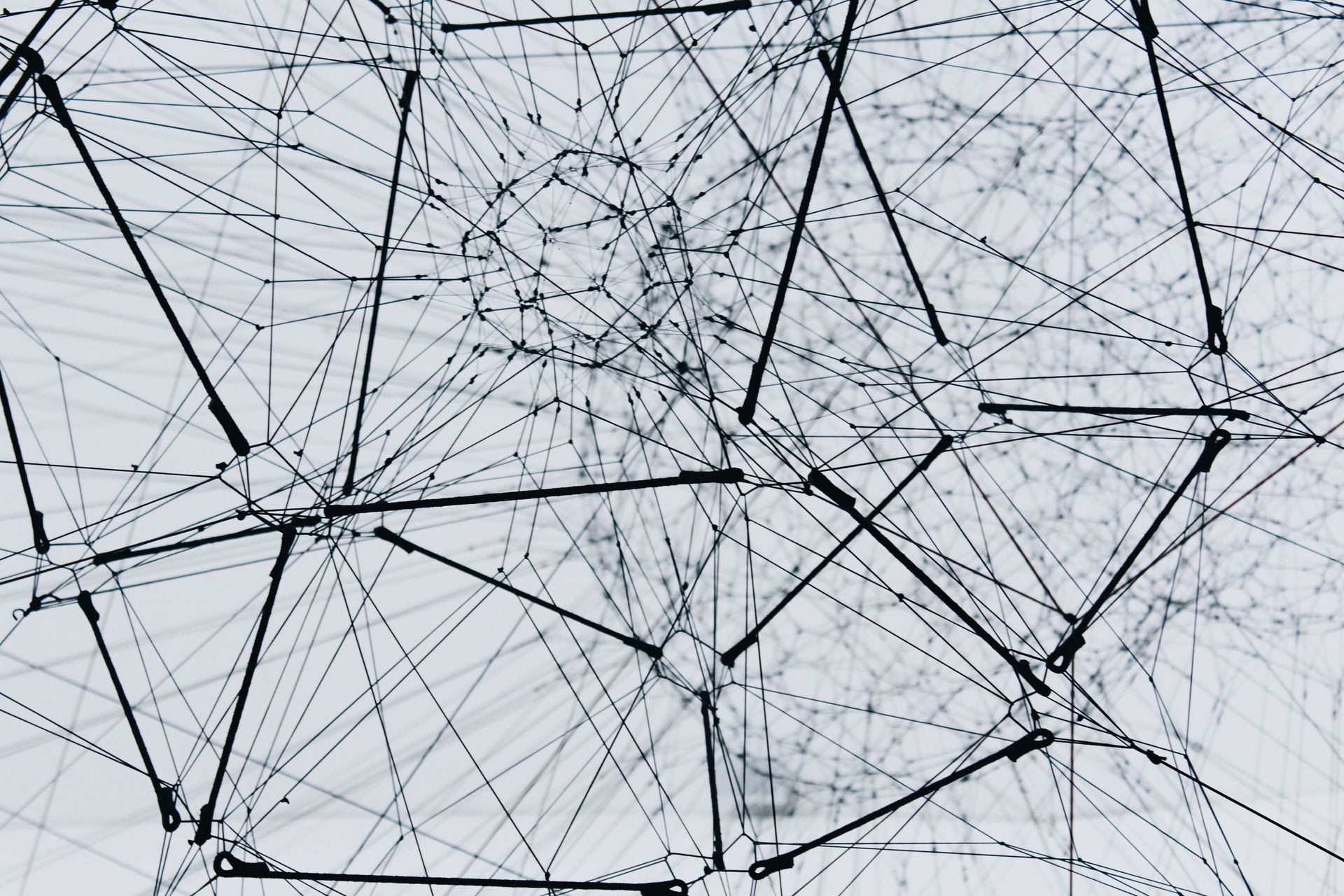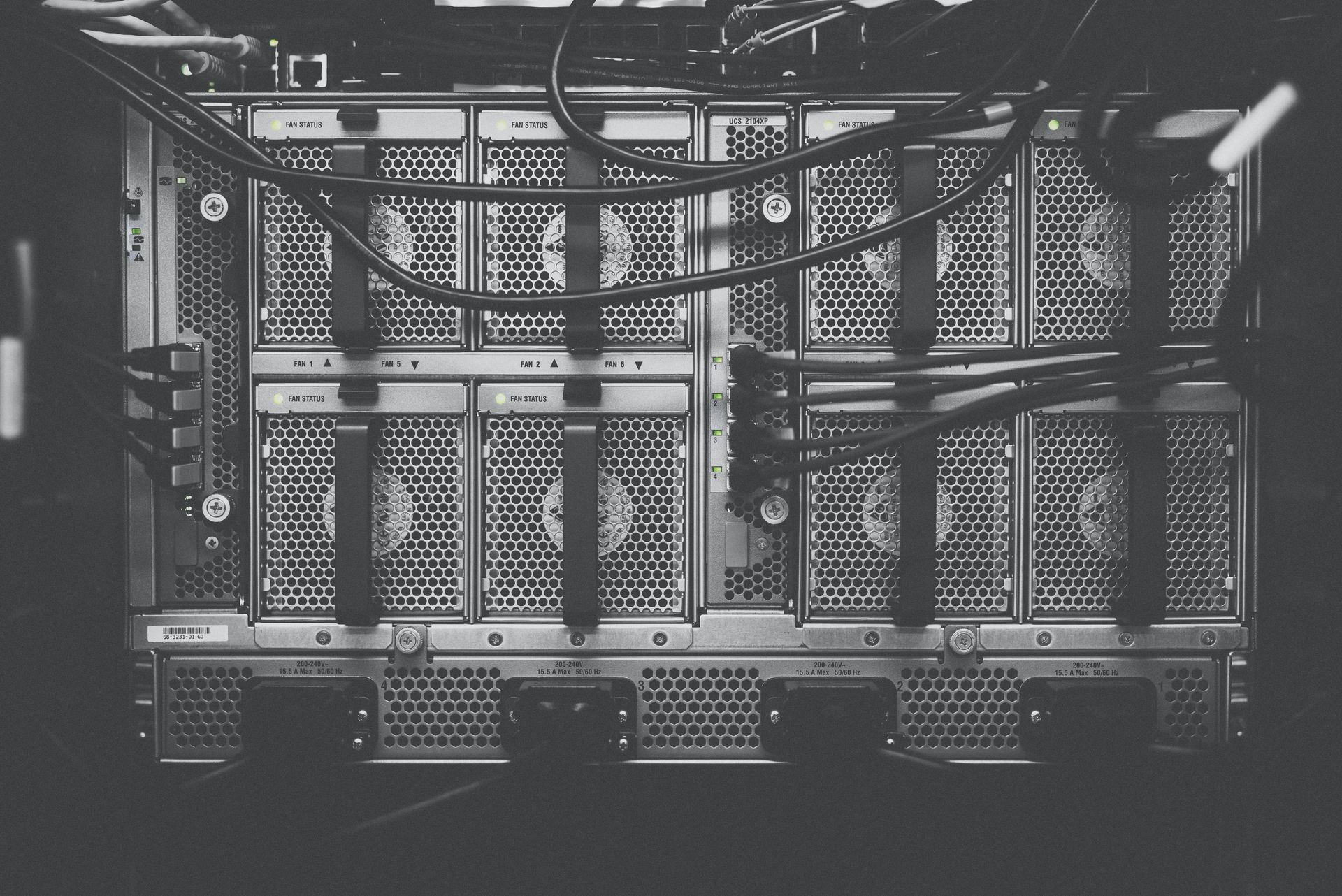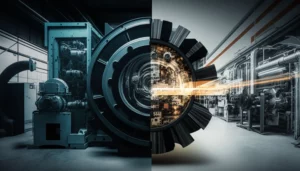Machine to machine (M2M) communication is revolutionizing the way we live and work. With M2M, devices can communicate with each other without human intervention. This means that machines can now learn from each other and make decisions on their own.
The possibilities for Machine to Machine systems are endless. Imagine a world where your car can drive itself, your appliances can order their own groceries, and your healthcare devices can monitor your vital signs 24/7. This is the future of M2M, and it’s all made possible by machine learning.
Machine learning is the science of teaching computers to learn on their own. By feeding computers large amounts of data, machine learning algorithms can learn to identify patterns and make predictions. This is what allows M2M devices to communicate and make decisions without human intervention.
If you’re interested in the future of M2M, then you need to learn about machine learning. Machine learning is the key to unlocking the potential of M2M, and it’s a skill that will be in high demand in the years to come.

What is Machine to Machine (M2M)?
Machine to Machine (M2M) technology enables seamless communication between devices without the need for human involvement. This remarkable capability can be achieved using different types of networks, including wired, wireless, and cellular connections.
While Machine to Machine devices are commonly utilized in industrial and commercial settings, their presence in the consumer market is steadily increasing.
History of M2M
The roots of M2M can be traced back to the early days of telecommunications. It was in the 1970s when the initial Machine to Machine applications emerged, primarily serving the oil and gas industry. These applications utilized radio telemetry to monitor the conditions of oil pipelines, ensuring efficient operations and timely maintenance.
Throughout the 1990s, M2M expanded its reach into various other industries, such as manufacturing and healthcare. Advancements in technologies like RFID (Radio Frequency Identification) and cellular networks played a significant role in making M2M more accessible and widely applicable.
By the 2000s, Machine to Machine systems had diversified even further, finding their way into a multitude of applications, including smart cities and transportation systems. The advent of the Internet of Things (IoT) further propelled the growth and adoption of M2M, creating an interconnected world where devices communicate seamlessly for improved efficiency and convenience.
Exploring the dynamic fusion of AI and the IoT
M2M vs IoT
The main difference between M2M and IoT is the scope of the network. M2M is typically used for point-to-point communication between devices, while IoT is typically used for more complex communication networks.
Machine to Machine devices are also typically smaller and simpler than IoT devices. This is because M2M devices are often battery-powered and need to be able to operate in remote locations. IoT devices, on the other hand, can be connected to the internet and can often be more complex.
Machine to Machine (M2M)
Machine to Machine is a technology that allows two or more devices to communicate with each other without human intervention. This can be done through a variety of methods, including wired and wireless networks.
M2M is used in a wide variety of applications, such as:
- Industrial automation: M2M can be used to monitor and control industrial equipment, such as robots and sensors. This can help to improve efficiency and safety in manufacturing plants
- Healthcare: M2M can be used to monitor patients’ health remotely. This can help to improve patient care and reduce costs
- Transportation: M2M can be used to track vehicles and shipments. This can help to improve logistics and reduce theft
- Smart cities: M2M can be used to monitor and control city infrastructure, such as traffic lights and water meters. This can help to improve efficiency and sustainability

Internet of Things (IoT)
IoT is a more general term that refers to the network of physical objects that are connected to the internet. These objects can collect and exchange data, and they can be controlled remotely.
IoT is used in a wide variety of applications, such as:
- Smart home: IoT can be used to create a smart home, where devices such as lights, thermostats, and locks can be controlled remotely. This can improve convenience and energy efficiency
- Smart city: IoT can be used to create a smart city, where city infrastructure such as traffic lights, water meters, and waste disposal can be monitored and controlled remotely. This can improve efficiency and sustainability
- Wearables: IoT can be used to create wearable devices, such as fitness trackers and smartwatches. These devices can collect data about the user’s activity and health, which can be used to improve fitness and track health conditions
Here is a table that summarizes the key differences between M2M and IoT:
| Feature | M2M | IoT |
| Communication type | Point-to-point | Networked |
| Device size and complexity | Smaller and simpler | Larger and more complex |
| Application focus | Specific tasks | General-purpose |
| Maturity | More mature | Less mature |
| Growth potential | Less growth potential | More growth potential |
How Machine to Machine (M2M) works?
Machine-to-machine (M2M) communication is the exchange of data between devices without human intervention. This can be done through a variety of methods, including wired and wireless networks.
Different components such as:
- Sensors: Sensors are devices that can collect data from the physical world. Sensors can be used to measure a variety of things, such as temperature, pressure, humidity, and motion. Sensors are often used in Machine to Machine applications because they can collect data in real time
- RFID tags: RFID tags are devices that can be used to identify and track objects. RFID tags can be attached to objects in order to collect data about their location, movement, and status. RFID tags are often used in M2M applications because they are small and can be attached to objects without affecting their functionality
- Wireless networks: Wireless networks are used to transmit data between devices. Wireless networks such as cellular, Wi-Fi, and Bluetooth can be used for M2M communication. Wireless networks are often used in M2M applications because they allow devices to communicate without being connected to a wired network
- Cloud computing: Cloud computing is used to store and process data that is collected from M2M devices. Cloud computing services can provide scalability, reliability, and security for M2M data. Cloud computing is often used in M2M applications because it allows businesses to store and process large amounts of data without having to invest in their own infrastructure
Are widely used in machine to machine transitions.
Data collection
The first step in M2M communication is to collect data from the physical world. This data can be collected by sensors, RFID tags, or other devices. Sensors are devices that can measure a variety of things, such as temperature, pressure, humidity, and motion. RFID tags are devices that can be used to identify and track objects. RFID tags can be attached to objects in order to collect data about their location, movement, and status.
Data transmission
The data collected from the physical world must then be transmitted to a central location. This can be done through a variety of methods, including wired and wireless networks. Wired networks, such as Ethernet and leased lines, can be used to transmit data over long distances. Wireless networks, such as cellular, Wi-Fi, and Bluetooth, can be used to transmit data over shorter distances.

Data processing
The data that is transmitted to the central location must then be processed. This processing can involve tasks such as data aggregation, analysis, and visualization. Data aggregation is the process of collecting data from multiple sources and combining it into a single data set. Data analysis is the process of examining data to identify patterns and trends. Data visualization is the process of displaying data in a way that makes it easy to understand.
Data action
The processed data can then be used to take action in the physical world. This action can involve tasks such as controlling devices, making decisions, or sending alerts. For example, data from sensors that measure temperature can be used to control the temperature of a building. Data from RFID tags can be used to track the location of assets.
There are many Machine to Machine (M2M) benefits
M2M communication can offer a wide range of benefits for businesses and organizations. One of the most significant benefits is improved efficiency. M2M can be used to monitor the performance of industrial equipment and send alerts if there is a problem. This can help to prevent unplanned downtime and improve efficiency. For example, a manufacturing plant could use M2M to monitor the temperature of a boiler and send alerts if the temperature gets too high. This could help to prevent the boiler from overheating and potentially causing an accident.
Another benefit of Machine to Machine communication is increased safety. M2M can be used to monitor equipment and processes for potential problems. This can help to prevent accidents and injuries. For example, a construction company could use M2M to monitor the weight of a crane and send alerts if the load is too heavy. This could help to prevent the crane from tipping over and potentially causing serious injuries.
M2M can also help to reduce costs. M2M can be used to automate tasks and improve efficiency. For example, a utility company could use M2M to control the temperature of a building automatically, based on the current weather conditions. This could help to reduce energy costs.

M2M can also help to improve decision-making. M2M can be used to provide real-time data about operations. This can help businesses to make better decisions about how to allocate resources. For example, a retail company could use M2M to track the location of its inventory and send alerts if an item is out of stock. This could help the company to ensure that it has enough inventory on hand to meet customer demand.
Finally, M2M can create new business opportunities. M2M can provide businesses with new ways to collect and use data. For example, a marketing company could use M2M to collect data about customer behavior and use this data to create targeted marketing campaigns. This could help the company to attract new customers and increase sales.
Machine to Machine (M2M) is not free from challenges
Machine to Machine communication is a rapidly growing technology with a wide range of applications. However, there are also a number of challenges that need to be addressed in order to fully realize the potential of M2M.
One of the biggest challenges is security. Machine to Machine networks are often exposed to security threats, such as hacking and data breaches. Hackers can exploit vulnerabilities in M2M devices to steal data or disrupt operations.
Another challenge is interoperability. Machine to Machine devices from different vendors often do not interoperate with each other. This can make it difficult to connect different devices and share data between them. This can be a challenge for businesses that want to deploy M2M solutions that involve devices from multiple vendors.

Data management is another challenge. Machine to Machine devices can generate large amounts of data, which can be difficult to manage and analyze. This can pose a challenge for businesses that are not equipped to handle large amounts of data. Businesses need to have the right infrastructure in place to store, process, and analyze the data collected from M2M devices.
Cost is also a challenge. Machine to Machine communication can be expensive, especially for small businesses. This is because M2M devices often require specialized hardware and software, which can be costly. Businesses need to carefully consider the cost of M2M communication before deploying M2M solutions.
Finally, M2M communication is subject to a variety of regulations, which can make it difficult to deploy M2M solutions. This is because Machine to Machine devices collect and transmit sensitive data, which must be protected in accordance with regulations. Businesses need to be aware of the regulations that apply to M2M communication in their particular industry.
Despite these challenges, M2M communication is a rapidly growing technology with a wide range of applications. As this technology continues to evolve, we can expect to see even more innovative and disruptive applications in the future.
Featured image credit: Photo by Google DeepMind on Unsplash.
- SEO Powered Content & PR Distribution. Get Amplified Today.
- PlatoData.Network Vertical Generative Ai. Empower Yourself. Access Here.
- PlatoAiStream. Web3 Intelligence. Knowledge Amplified. Access Here.
- PlatoESG. Automotive / EVs, Carbon, CleanTech, Energy, Environment, Solar, Waste Management. Access Here.
- BlockOffsets. Modernizing Environmental Offset Ownership. Access Here.
- Source: https://dataconomy.com/2023/07/14/what-is-machine-to-machine-m2m/
- :has
- :is
- :not
- :where
- 1
- a
- Able
- About
- accessible
- accident
- accidents
- accordance
- achieved
- Action
- activity
- Adoption
- advancements
- advent
- affecting
- aggregation
- AI
- alerts
- algorithms
- All
- allocate
- allow
- allows
- also
- amounts
- an
- analysis
- analyze
- and
- Another
- appliances
- applicable
- applications
- Apply
- ARE
- AS
- Assets
- attract
- automatically
- aware
- back
- based
- BE
- because
- before
- being
- benefit
- benefits
- Better
- between
- Biggest
- bluetooth
- breaches
- Building
- business
- businesses
- by
- Campaigns
- CAN
- capability
- car
- care
- carefully
- cars
- causing
- cellular
- central
- challenge
- challenges
- Cities
- City
- Cloud
- cloud computing
- collect
- Collecting
- combining
- come
- commercial
- commonly
- communicate
- Communication
- company
- complex
- components
- computers
- computing
- conditions
- Connect
- connected
- Connections
- Consider
- construction
- consumer
- continues
- control
- controlled
- controlling
- convenience
- Cost
- costly
- Costs
- could
- create
- Creating
- credit
- Current
- customer
- customer behavior
- Customers
- data
- data analysis
- Data Breaches
- Data Exchange
- data set
- data visualization
- Days
- decisions
- Demand
- deploy
- deploying
- Devices
- difference
- differences
- different
- difficult
- displaying
- Disrupt
- disruptive
- diverse
- diversified
- do
- done
- downtime
- drive
- dynamic
- each
- Early
- easy
- efficiency
- efficient
- emerged
- enables
- Endless
- energy
- enough
- ensure
- ensuring
- equipment
- equipped
- especially
- Even
- evolve
- Examining
- example
- exchange
- exciting
- expanded
- expect
- expensive
- Exploit
- exposed
- feeding
- finding
- First
- fitness
- focuses
- For
- Free
- Frequency
- from
- fully
- further
- fusion
- future
- GAS
- General
- generate
- generates
- groceries
- Growing
- Growth
- hackers
- hacking
- had
- hand
- handle
- Hardware
- Have
- having
- Health
- healthcare
- heavy
- help
- High
- Home
- Homes
- How
- How To
- However
- HTTPS
- human
- Identification
- identify
- if
- image
- imagine
- improve
- improved
- in
- include
- Including
- Increase
- increasing
- industrial
- industrial equipment
- industries
- industry
- Infrastructure
- initial
- innovative
- interconnected
- interested
- Internet
- internet of things
- interoperate
- intervention
- into
- inventory
- Invest
- involve
- involvement
- iot
- iot devices
- IT
- ITS
- itself
- jpg
- Key
- large
- LEARN
- learning
- like
- lines
- live
- load
- location
- locations
- Locks
- logistics
- Long
- machine
- machine learning
- Machines
- made
- Main
- maintenance
- make
- MAKES
- Making
- manage
- manufacturing
- many
- Market
- Marketing
- Marketing Campaigns
- max-width
- means
- measure
- Meet
- methods
- Monitor
- monitored
- more
- most
- motion
- movement
- multiple
- multitude
- must
- Need
- network
- networks
- New
- now
- number
- objects
- of
- offer
- often
- Oil
- Oil and Gas
- on
- ONE
- operate
- Operations
- or
- order
- organizations
- Other
- out
- over
- own
- particular
- patient
- patient care
- patterns
- performance
- photo
- physical
- Place
- plato
- Plato Data Intelligence
- PlatoData
- played
- possibilities
- possible
- potential
- potentially
- Predictions
- presence
- pressure
- prevent
- primarily
- Problem
- problems
- process
- processed
- processes
- processing
- propelled
- protected
- provide
- Radio
- range
- rapidly
- reach
- real
- real-time
- real-time data
- realize
- reduce
- refers
- regulations
- reliability
- remarkable
- remote
- require
- Resources
- retail
- Revolutionizing
- right
- robots
- Role
- roots
- Safety
- sales
- Scalability
- Science
- scope
- seamless
- seamlessly
- security
- Security threats
- see
- self-driving
- send
- sending
- sensitive
- sensors
- serious
- Services
- serving
- set
- settings
- Share
- significant
- Signs
- single
- Size
- skill
- small
- small businesses
- smaller
- smart
- Smart Cities
- Smart City
- Smart home
- smartwatches
- Software
- Solutions
- Sources
- specialized
- Status
- Step
- stock
- store
- straightforward
- such
- Systems
- table
- Take
- targeted
- tasks
- Teaching
- Technologies
- Technology
- telecommunications
- term
- than
- that
- The
- The Future
- their
- Them
- then
- There.
- These
- they
- things
- this
- threats
- Through
- Tipping
- to
- too
- track
- Trackers
- traffic
- transitions
- transmit
- transportation
- Trends
- two
- types
- typically
- understand
- unlocking
- use
- used
- using
- utility
- utilized
- variety
- various
- Vast
- Vehicles
- vendors
- visualization
- vital
- vs
- Vulnerabilities
- want
- was
- Waste
- Water
- Way..
- ways
- we
- wearable
- wearable devices
- Weather
- weight
- What
- when
- which
- while
- Wi-fi
- wide
- Wide range
- widely
- will
- wireless
- with
- without
- Work
- works
- world
- years
- you
- Your
- zephyrnet












